This post may contain paid links. If you make a purchase through links on our site, we may earn a commission.
Our handy beef, burger, and steak temperature chart will show you how to cook the perfect steakhouse steak, burger, or prime rib, every single time!
We love our steaks, burgers, prime ribs, and roasts… in fact, we could eat beef every single day! The question we get asked the most is, “How do I cook the perfect steak?” And if it’s not steak, we’re being asked what the perfect temperature is for prime rib and burgers.
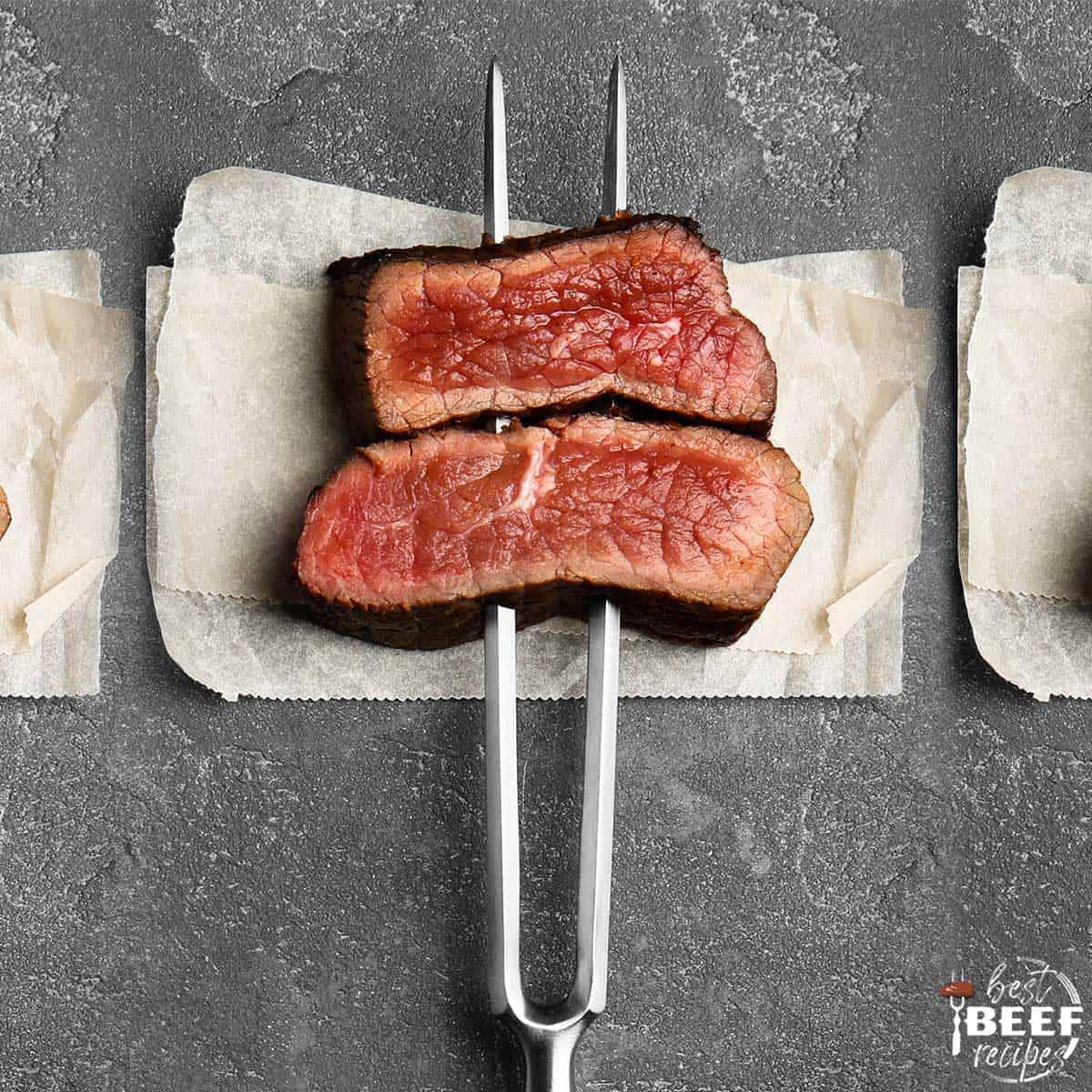
Jump to:
- Steak Temperature
- Medium Rare Steak Temp
- How to Cook Steak Perfectly
- How to Cook Steak on the Stove
- How to Cook Steak on the Grill
- Steak Dinners
- Beef Temperature Guidelines
- Roast Beef Recipes
- Prime Rib Roast Temps
- Best Prime Rib Recipes
- Burger Temp Chart
- Burger Temp Chart FAQs
- How to Grill the Perfect Burger
- Burgers Tips
- How to Defrost Frozen Burgers
- Burger Recipes
- Internal Temp for Meatballs
- Best Meatball Recipes
- Internal Temp for Meatloaf
- Brisket Temp
- Tri-Tip Temp
- Beef Temperature Tips
- Beef Internal Temps Chart (Printer-Friendly)
- 📋 Recipe
- 💬 Reviews
Steak Temperature
What temp should steak be? That all depends on how you like it done. We have an easy steak temperature chart. It allows you to cook the perfect steakhouse steak, no matter what cut is your favorite. Make sure to use a meat thermometer when measuring beef temperature.
The USDA recommends steak’s internal temperature should be a minimum of 145°F.
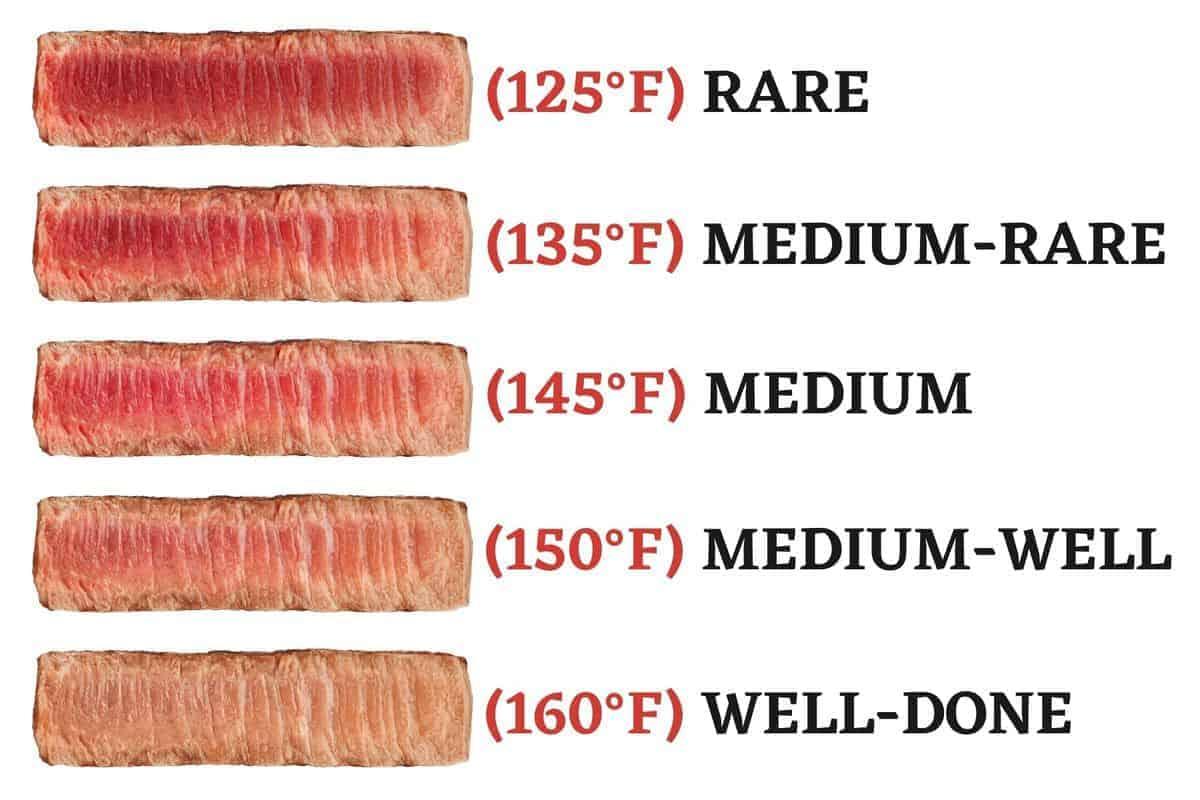
Medium Rare Steak Temp
- If using frozen steak, thaw it overnight in the refrigerator first.
- Let your steaks come to room temperature by leaving them out for 30 minutes before cooking. This ensures your beef will cook evenly.
- Liberally season steaks on both sides with the seasoning of your choice.
- Always use a meat thermometer to check the doneness of your steaks.
- Remove from the heat when your steaks are 5 degrees less than your desired temperature.
- Always rest your steaks after cooking them for at least 8 to 10 minutes.
- Slice against the grain after resting.

How to Cook Steak Perfectly
My personal favorite cut of steak to cook is ribeye. It’s tender and flavorful, and simple to master cooking on the stove and grill. My guides on how to cook steak on the stove and how to grill steak perfectly will show you how to make the perfect ribeye steak!
How to Cook Steak on the Stove
- Preheat the oven to 450°F. Place a cast iron or another oven-proof pan in the oven for 5 minutes while it heats up. Meanwhile, season the steak with salt and pepper. When the oven is heated, carefully remove the skillet using oven mitts and place it on the stovetop over medium heat.
- Place ribeye steak in the skillet and sear for 2 minutes on each side. Top the steak with garlic and thyme, then place the skillet back in the oven for 6-7 minutes.
- After 6-7 minutes, carefully remove the pan from the oven and place it back on the stove over low heat. Flip the steak and top with butter. Using pot holders, carefully tilt the pan to pour the melted butter, garlic, and thyme over the steak for approximately 3 minutes. Cook to the desired doneness with an instant-read thermometer.
- Allow resting for at least 10 minutes before slicing and serving. Cut against the grain for best results. Enjoy!
See the full post for more info: How to Cook Steak in the Oven. Also learn How to Cook Wagyu Steak for an unforgettable cut of beef!
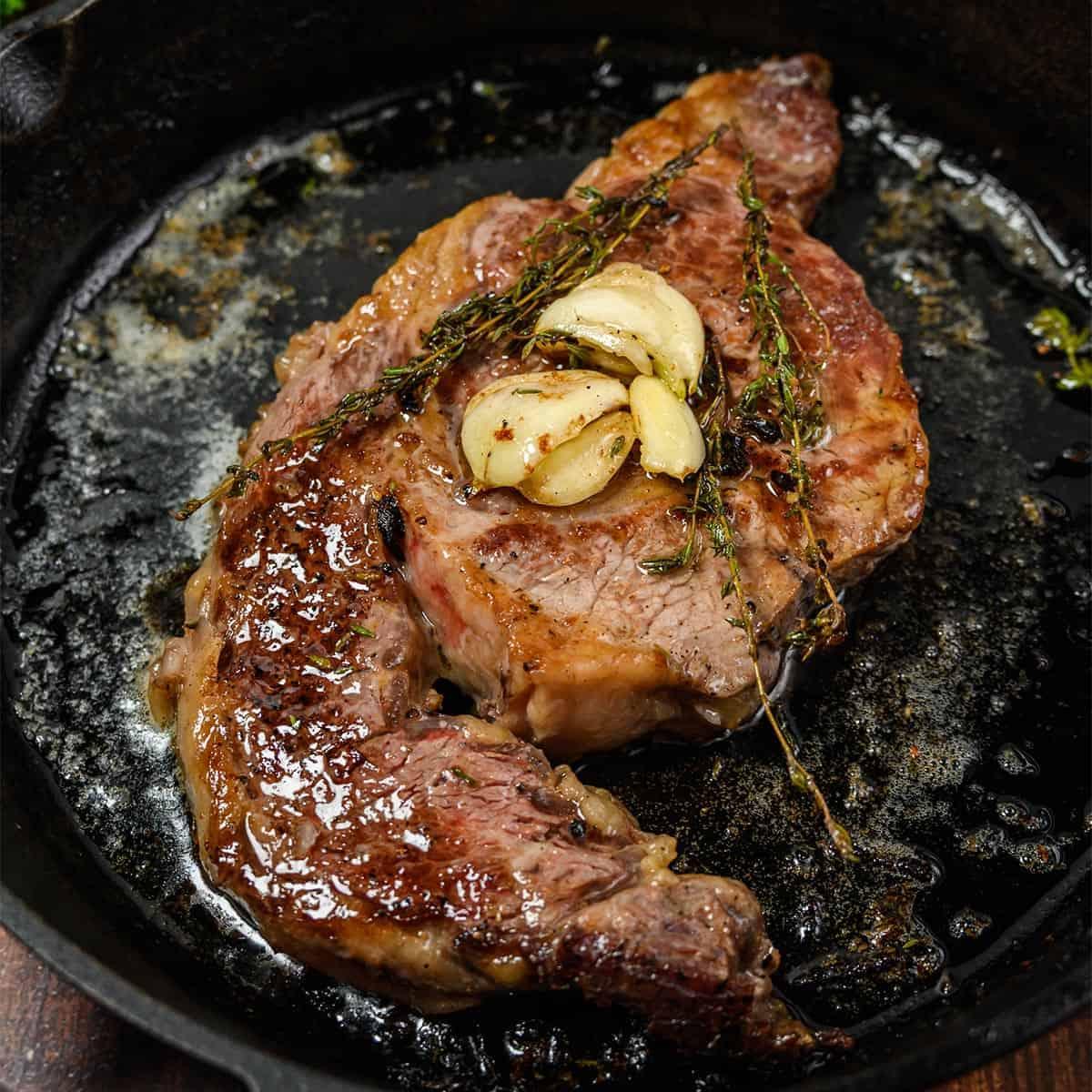
How to Cook Steak on the Grill
- Generously season both sides of your steak with your desired steak seasoning. After seasoning, let the steaks sit to reach room temperature for at least 30 minutes.
- Preheat the grill to high heat, about 450 to 500°F for the ideal beef cooking temp. Sear steaks for 3 minutes per side with the lid open. Then, reduce the heat to medium-low and continue cooking with the lid closed until the steaks reach the desired level of doneness.
- Remove steaks from the grill and top with garlic butter compound butter. Allow steaks to rest for 10 minutes before cutting into them, then slice against the grain for best results.
See the full post for more info: How to Grill Steak
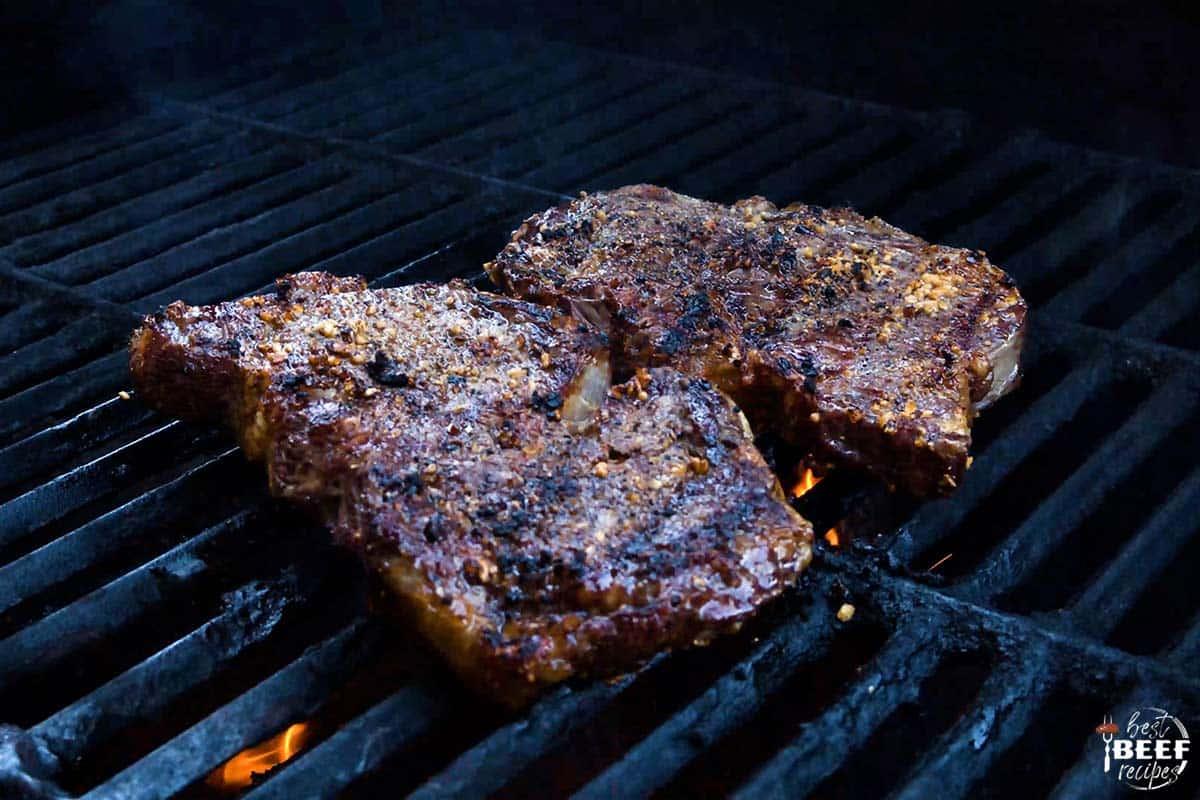
Steak Dinners
Now that you know the proper steak temps, you are ready to give one of our steak dinner ideas a try. Don’t forget my guides on Tenderizing Steak and Salting Steak!
See my guide to Steak Cuts for info on every cut of steak!
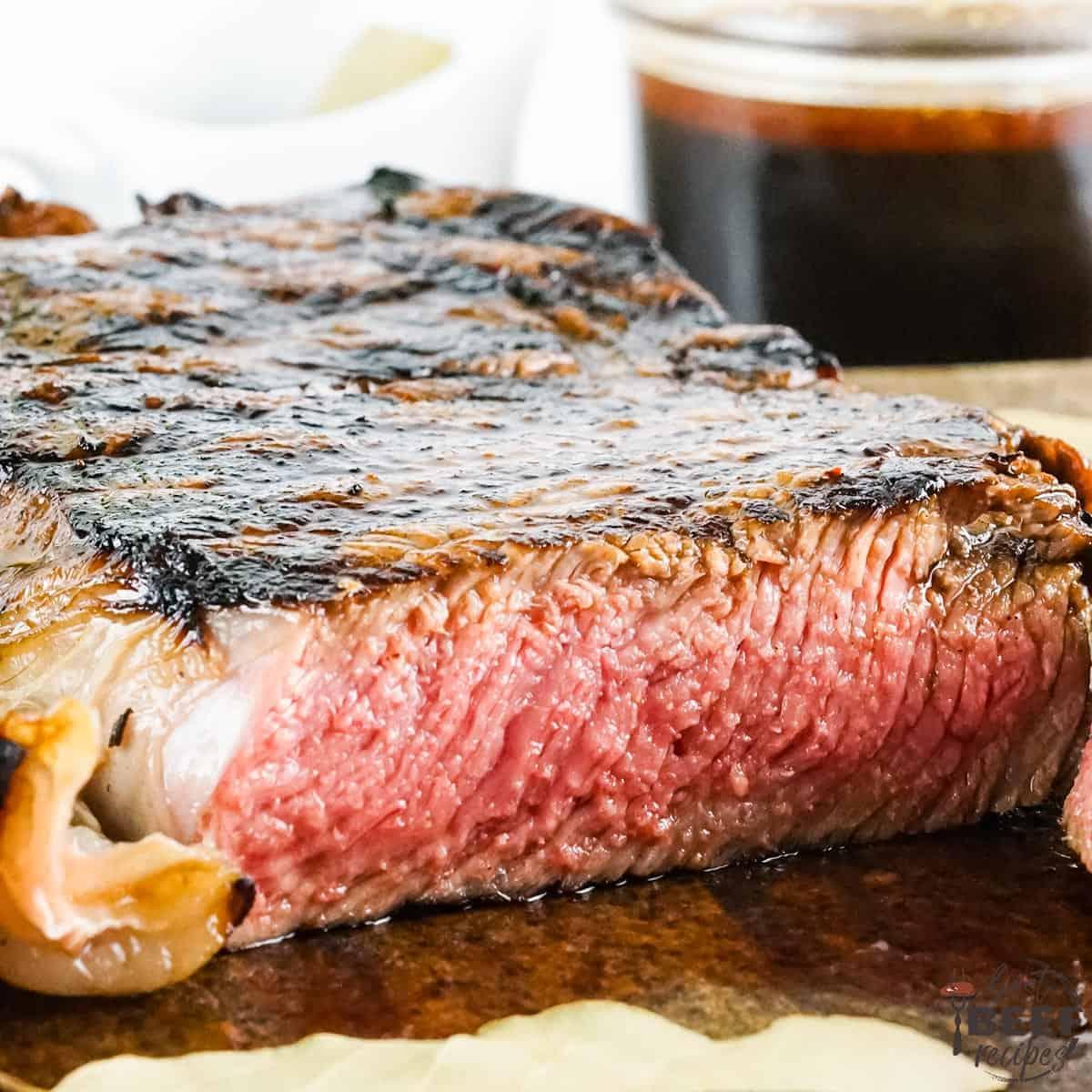
Beef Temperature Guidelines
Check the beef’s internal temp using a meat thermometer for best results.
Roast Beef Recipes
- Dutch Oven Pot Roast
- Instant Pot Pot Roast
- Mississippi Pot Roast
- Baked Chuck Roast
Check out all our best pot roast recipes!
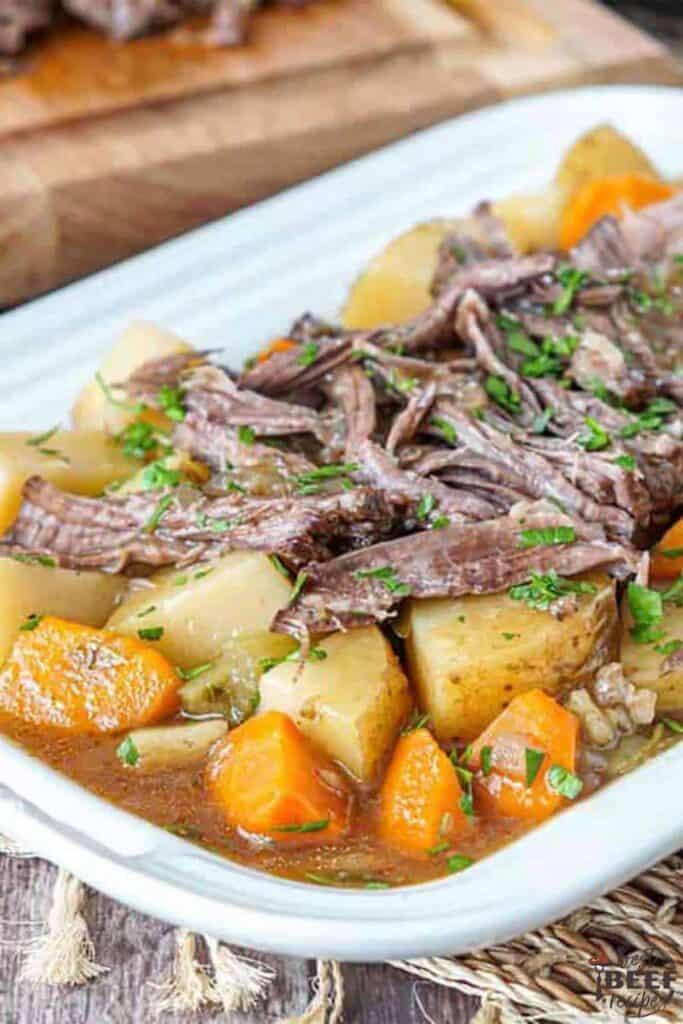
Prime Rib Roast Temps
Beef Roast recipes are our specialty. We love prime rib recipes of all kinds, from smoking prime rib to cooking it in the Instant Pot! You can use this roast beef temperature chart no matter what preparation you use to cook your beef.
The USDA recommends roast beef cooking temp be a minimum of 145°F. For more in-depth detail about prime rib, see my prime rib temperature chart.
Best Prime Rib Recipes
- Smoked Prime Rib Roast
- Instant Pot Prime Rib Roast
- Boneless Rib Roast
- Best Prime Rib Recipe
- Standing Rib Roast Recipe
- Sous Vide Prime Rib
- Air Fryer Prime Rib
Our absolute favorite Prime Rib Seasoning!
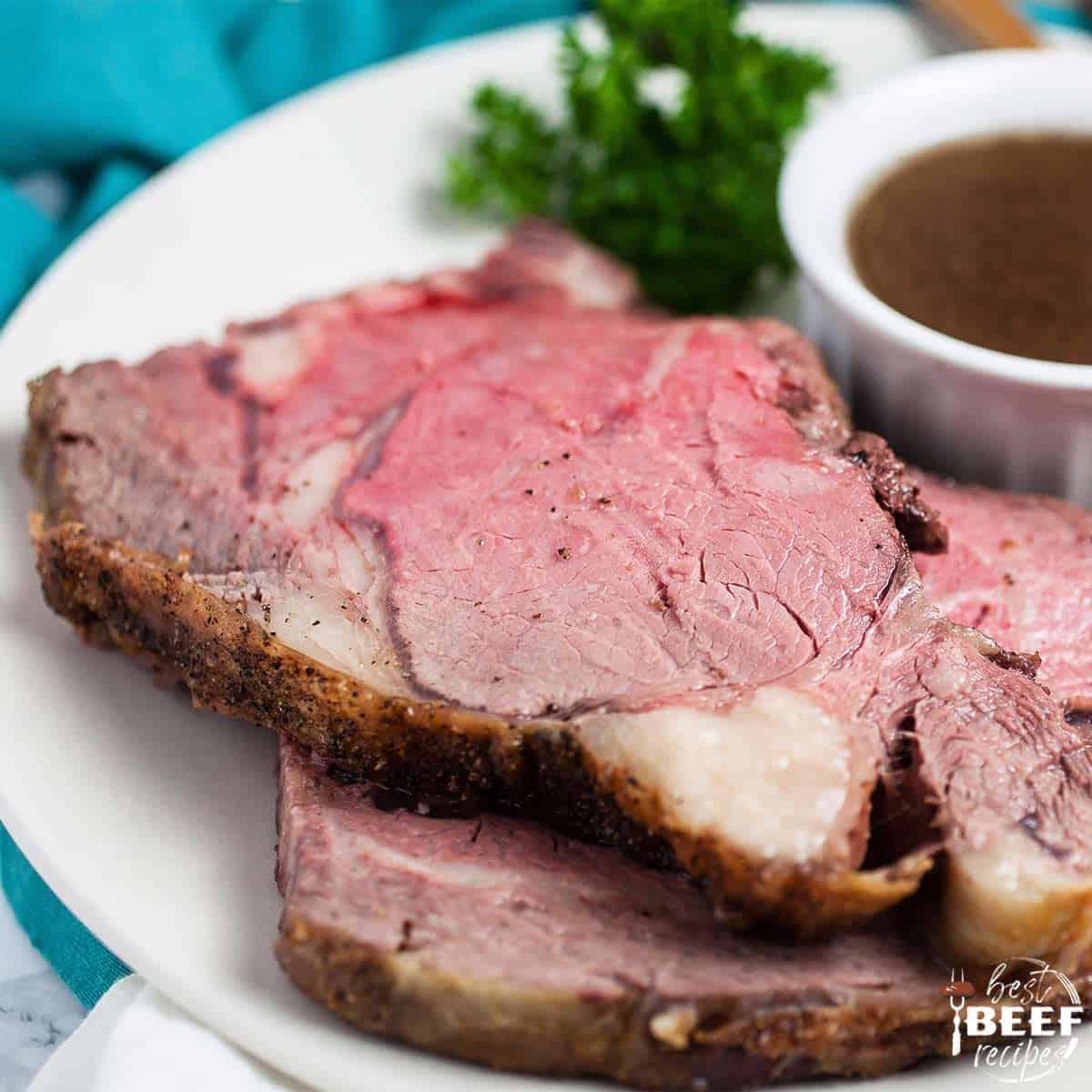
Burger Temp Chart
Burgers are a staple at my house. My family loves them! From grilled burgers topped with a fried egg to air fryer burgers with garlic butter spread, we never get tired of a good burger.
For as often as I make burgers at home, one statement has always remained true… it can be difficult to get the exact temperature you want! How do you know when a burger is done? How do you reach that perfect, juicy medium-rare burger?
Luckily, I have a few tricks to share with you. Above all else, you will want to go armed with my burger cooking chart. This easy burger temp chart has all of the info you need to achieve your desired degree of doneness without any second-guessing. Just make sure you use a meat thermometer to check minimum safe temperature!
The USDA recommends ground beef be cooked to a minimum of 160°F final temperature. For more info, see How Long to Cook Burgers – and for more tips, my guide on How to Cook Burgers!
Burger Temp Chart FAQs
How to Grill the Perfect Burger
- Gently mix your ground beef with the seasoning of choice and form into equally-sized patties. Chill in the refrigerator. Unlike other cuts of meat, burgers hold together better and are juicier when chilled.
- Add to the grill or grill pan over high heat. If using a grill pan, lightly grease it with oil. Once hot, add the chilled patties to the grill.
- Flip after the first side no longer sticks to the grill. If the burger still sticks to the pan, it isn’t ready to flip. Cook burger patties to the desired degree of doneness, using a meat thermometer to check the internal temperature. If adding cheese, you can add it in the last 1-2 minutes of cooking time to melt over the top.
- Add toppings of choice, serve, and enjoy!
Burgers Tips
- Always pull your burgers off of the heat 5°F below your desired degree of doneness. For example, if you want medium-rare burgers, take your burgers off of the heat at least 120°F.
- Let your beef rest after cooking for the best results. If you serve the burgers right away without letting them rest, all of the juicy goodness will leak right out of them with the first bite.
- Always use a meat thermometer to measure the doneness of a burger. It really will make your life so much easier when cooking any meat at all. I use a thermometer for everything on my beef temperature chart!
- If adding cheese to a burger, add it close to the very end of the cooking time, within 1-2 minutes of your burger being ready to pull off the heat. You’ll get that perfect melty cheese.
- My burger temperature chart works for burgers cooked on the stove, burgers cooked on the grill, and even for burgers cooked with alternate methods like the air fryer or smoker. The temperature you aim for will always remain the same.
How to Defrost Frozen Burgers
It is totally possible to make perfect burgers using frozen patties. If you have frozen patties to defrost, you should completely defrost them before cooking them. The best way to defrost burgers is to leave them overnight in the refrigerator to cook the next day, but if you’re in a rush you can also defrost them using other methods.
- The safest and best method: defrost burgers overnight in the refrigerator. Always keep a paper towel or some other protection underneath the burgers as they defrost to prevent them from potentially leaking into your fridge. Trust me.
- A quick method: defrost burgers using the microwave. Add your ground beef to a microwave-safe bag and add it to a plate. Set your microwave to defrost mode, or use the low heat setting. Defrost for 3 to 4 minutes, turning the beef over to the other side halfway through. Cook immediately if using this defrost method, as it is unsafe otherwise.
- Defrost in water: You can also defrost hamburger beef using cold water. Add the package of beef to a bowl of cold water and it will begin to defrost. Every 30 minutes, for safety reasons, replace the water with fresh cold water.
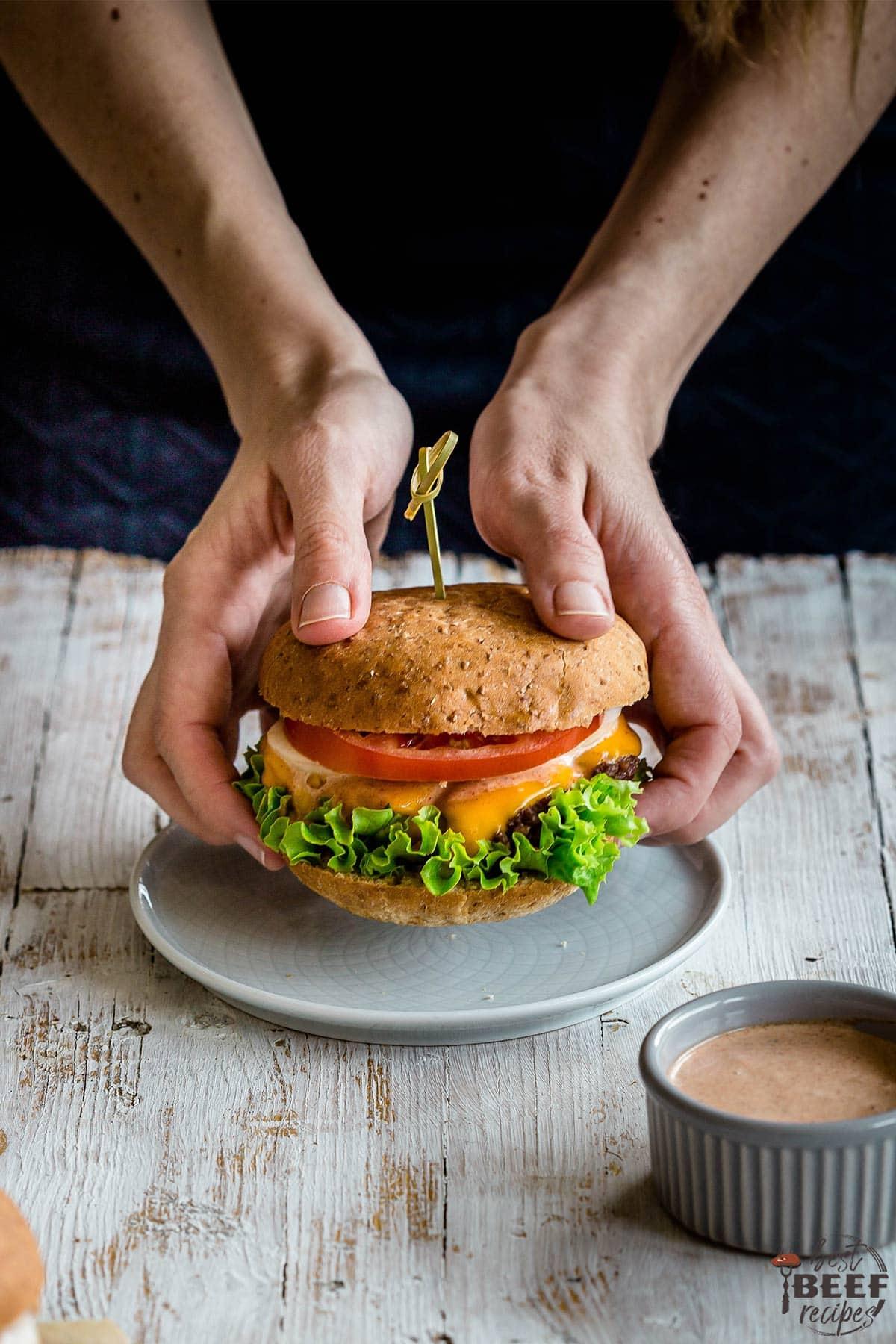
Burger Sauce
One of the best burger sauces you can serve with a burger is my incredible Special Burger Sauce. This is an unbelievably flavorful sauce recipe perfect for pairing with a beef burger. Another favorite option is to serve burgers with garlic butter sauce – or try more of my Sauces for Meat Recipes!
Burger Seasoning
The best burger seasoning, by far, is my Burger Seasoning Recipe. You will be blown away by the flavor this burger seasoning adds to your favorite burger! I love it with my best burger recipes.
Burger Recipes
Ready to try your newfound techniques by cooking burgers? Try one of my best burger recipes! I guarantee you’ll find a new favorite on this list:
- Smoked Burgers
- Egg Burger with Caramelized Onions
- Smash Burger with Special Sauce
- Mushroom Swiss Burger
- Air Fryer Burger with Garlic Butter Spread
- Loaded Burgers with Bacon and Caramelized Onions
- Cheeseburger Sliders on Hawaiian Rolls
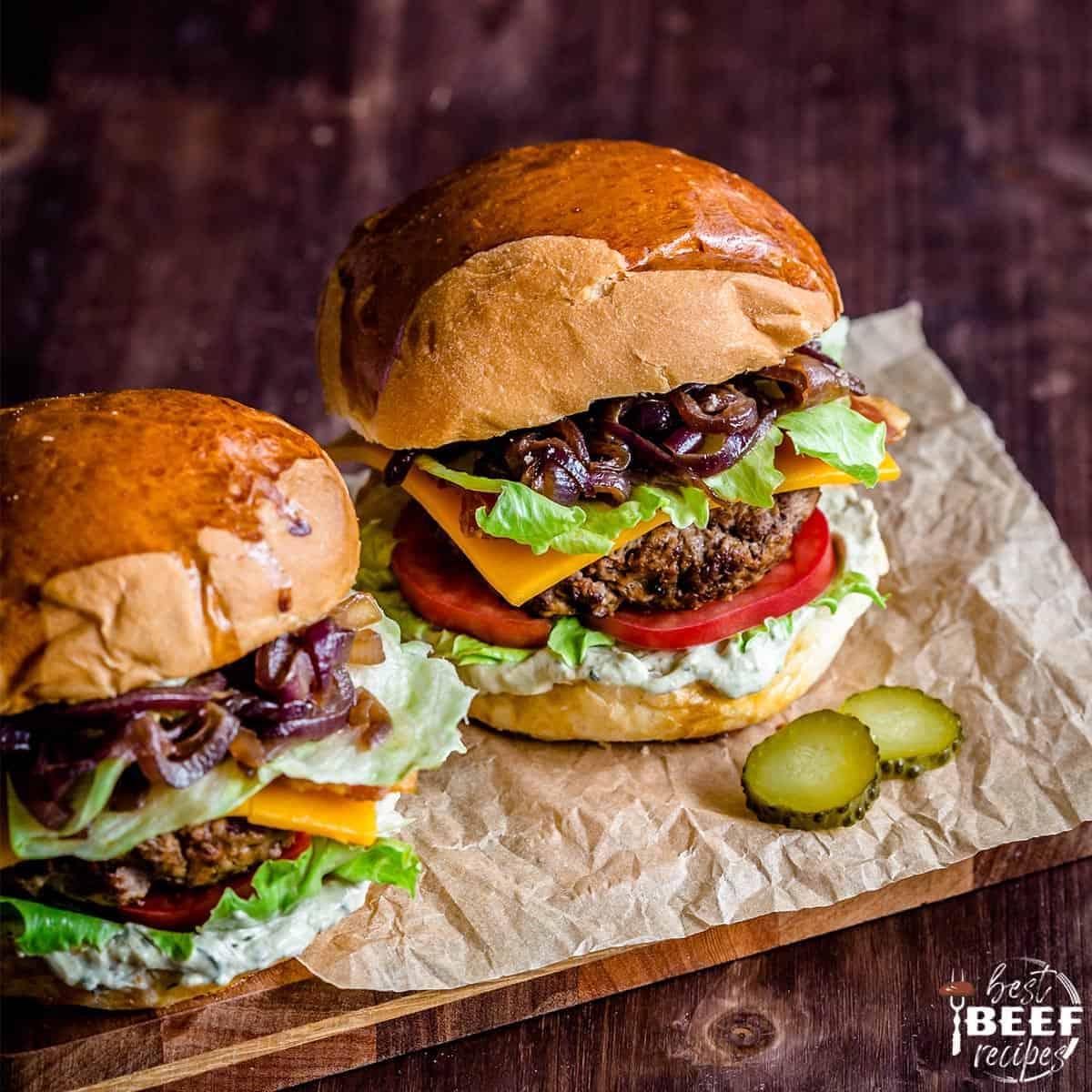
Internal Temp for Meatballs
Always cook your meatballs until the meatballs reach an internal temperature of 160 degrees F on an instant-read thermometer.
Best Meatball Recipes
- Instant Pot Meatballs
- Honey Sriracha Meatballs
- Baked Meatball Sub
- Air Fryer Meatballs
- Italian Wedding Soup
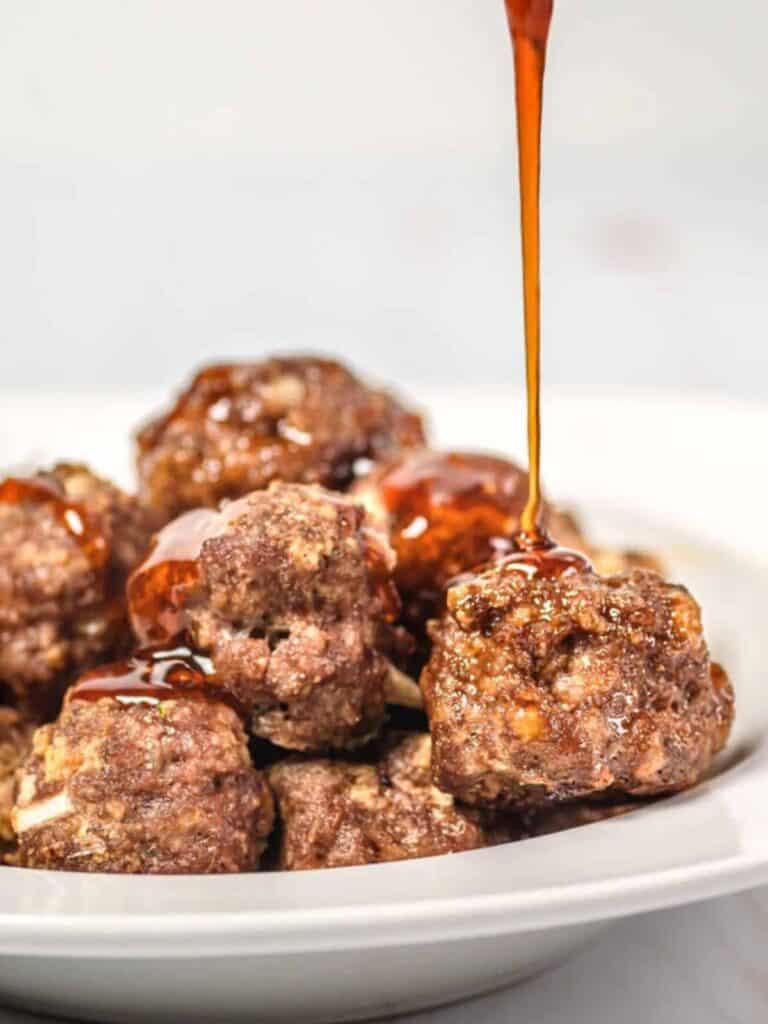
Internal Temp for Meatloaf
The ideal temperature for meatloaf is 160°F. Always use a meat thermometer to check that your meatloaf is cooked properly before pulling it out of the oven.
Our absolute favorite Meatloaf recipe is this Cheesy Keto Meatloaf Recipe using our homemade meatloaf seasoning. It is out of this world!
Brisket Temp
There is something so incredibly delicious about a brisket. My favorite way to prepare a beef brisket is by smoking it. I recommend smoking it unwrapped until your brisket temperature reaches 165°F. Then, wrap it in foil. Once your smoked brisket internal temp reaches 205°F, it’s ready.
Slow Cooker Brisket is also a flavorful way to prepare a brisket when you want to set it and forget and still serve a delicious meal.
Tri-Tip Temp
The Tri-Tip Steak is cut pieces of the triangular tri-tip. It is also known as triangle steak. It has become extremely popular because of its superior flavor.
My favorite Tri-Tip recipe is this smoked tri-tip recipe! It is packed with flavor and oh so delicious!
It should always be cooked to the same degree of doneness as a steak.
Beef Temperature Tips
- Use an instant-read thermometer or meat thermometer.
- Insert the thermometer through the side of the beef with the tip towards the center. Don’t touch fat or bone for a proper read.
- Take burgers and steaks off the heat when they are 5 degrees lower than the doneness you desire.
- Remove roast beef from heat when it reaches 5 to 10 degrees lower than your desired doneness.
- Allow beef to rest after cooking to lock in the juices and finish cooking to your desired degree of doneness.
- Follow this guide with our Best Cuts of Beef and Beef Seasonings.
- See my Meatloaf Temps guide next!
Beef Internal Temps Chart (Printer-Friendly)
Print our handy beef temperature chart below for a quick reference guide to have on hand at all times! Click here to print the chart.




